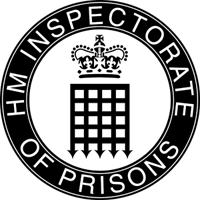New inspection report of Harmondsworth immigration removal centre published
HM Chief Inspector of Prisons (HMCIP) last week published an inspection report following a scrutiny visit to Harmondsworth immigration removal centre (IRC) carried out this March.
 Image credit: UK GovernmentYou can read the 30-page report here.
Image credit: UK GovernmentYou can read the 30-page report here.
Due to the Covid-19 pandemic, less than 100 detainees were being held at Harmondsworth when HMCIP visited. The centre near Heathrow is Europe's largest immigration detention facility and can normally hold nearly 700 people.
Overall, HMCIP found that Harmondsworth had adapted well to the challenges of the Covid pandemic and staff cared for detainees reasonably well. Measures to prevent transmission of Covid at the centre were found to have been effective. Violence was low, safety was generally good and the atmosphere was largely calm.
Inspectors also found, however, a number of serious concerns. The report highlighted the following four key concerns:
• Detainees were locked in their cells for an hour over lunch and during the night from 9.15pm. Such restrictions on free movement were inappropriate for a detainee population.
• Levels of vulnerability were high and a number of detainees assessed to be at risk of harm in detention had been held for too long. There were systemic problems in the provision of release accommodation for detainees who were considered unfit for detention and/or could not be removed.
• Living conditions in the units were below an acceptable standard. Persistent problems with pests, filthy cell toilets and broken and dilapidated communal showers were particularly problematic.
• The take-up of activity places was low. Not enough was done to make detainees aware of the benefits of participation or to encourage them to attend. Their learning and language needs were not assessed.
The vulnerability of detainees was found to be a particular concern at Harmondsworth, with about 45% of detainees assessed at the two higher levels of vulnerability under the Home Office's adults at risk policy.
Half of the detainees interviewed by HMCIP said they had mental health problems and 80% said they had felt depressed while at Harmondsworth. Health professionals considered some detainees to be unfit for detention.
The report added: "Detainee custody officers had a limited awareness of the adults at risk policy and some had a poor understanding of the vulnerability of detainees assessed to be at risk. The centre opened vulnerable adult care plans (a care planning process similar to assessment, care in detention and teamwork case management for those at risk of suicide or self-harm in IRCs) for detainees considered to be most at risk. The plans we reviewed lacked focus and their purpose was poorly understood by some staff."
Charlie Taylor, HM Chief Inspector of Prisons, noted that the length of detention was also concerning.
Taylor said: "It was a concern that some detainees had been held for very lengthy periods – often, we were told, as a result of systemic problems with the provision of suitable release accommodation. Eight people had been in detention for over a year and 26 for more than six months. Yet the majority (58%) were simply released after a potentially damaging period of detention."
On concerns accessing legal advice, the report found: "Face-to-face free legal advice surgeries were still suspended, but telephone appointments were available. Some detainees reported problems with the telephone advice rota and the centre did not monitor whether detainees had received the advice. Forty-three per cent of detainees interviewed said it was difficult to get free legal advice. […] It was a concern that some vulnerable detainees did not have a lawyer. In one case, the Home Office decided that the detainee was a victim of modern slavery, but nevertheless decided to remove him. He has been detained for over a year because no flights were available during the pandemic."
Charlie Taylor added that inspectors found Harmondsworth needed significant refurbishment to bring living conditions up to an acceptable standard.
The report stated: "Some of the conditions in the centre were below acceptable standards. Most cell toilets we saw were filthy and needed to be replaced as managers said they were too damaged to clean. Communal showers on the wings were dilapidated and regularly broken. Detainees also told us about unpredictable heating system and poor ventilation; cell windows were sealed and detainees could not control the flow of fresh air. There was also a persistent problem with mice. Pest control teams visited the centre several times a week, but the problem had remained unresolved for many years."